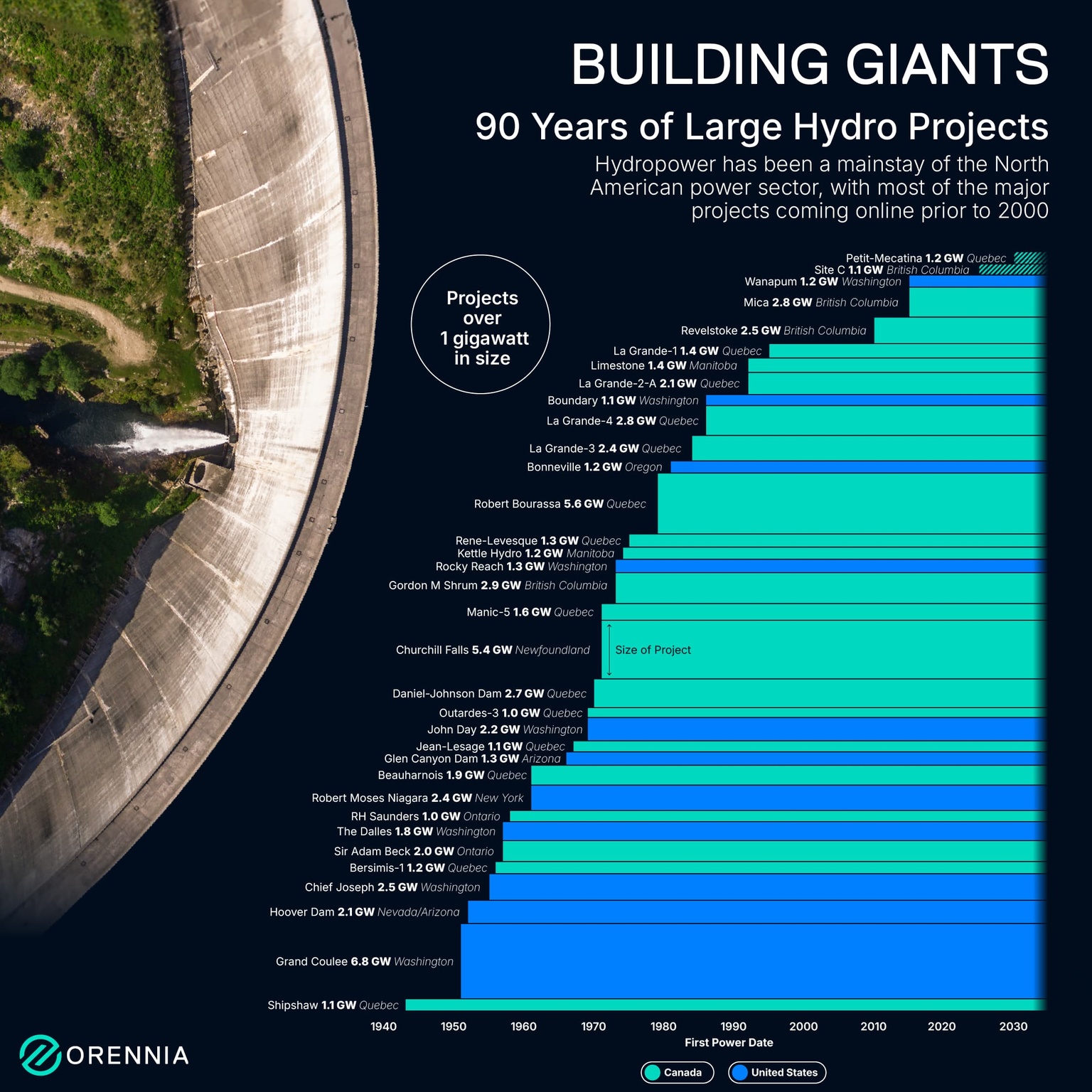
Aaron Foyer
Vice President, Research and Analytics

Aaron Foyer
Vice President, Research and Analytics

Source: Orennia
North America has a rich history of large-scale hydroelectric projects, which have played a significant role in shaping the continent’s energy landscape. These projects harness the immense power of rivers to generate electricity, providing a renewable and reliable energy source.
Grand Coulee Dam (Washington, USA): The Grand Coulee Dam, located on the Columbia River in Washington State, is the largest hydroelectric power producer in the US. Completed in 1942, it was a key component of the Columbia Basin Project, providing irrigation, flood control, and electricity. The dam has a capacity of 6.8 gigawatts, making it one of the largest power plants in the world. The reservoir it creates, Franklin D. Roosevelt Lake, extends 151 miles upstream, contributing to both water storage and recreation.
Robert-Bourassa Generating Station (Québec, Canada): The Robert-Bourassa Generating Station, formerly known as the La Grande-2, is part of the James Bay Project in northern Québec. This underground power station is one of the largest of its kind in the world, with a capacity of 5.6 gigawatts. Completed in 1981, the dam plays a crucial role in Hydro-Québec’s vast network, contributing to the province’s renewable energy supply.
Churchill Falls Generating Station (Newfoundland and Labrador, Canada): The Churchill Falls Generating Station, located on the Churchill River in Labrador, is one of the largest underground hydroelectric power stations in the world. It was completed in 1974 and remains a key asset in Canada’s energy infrastructure. The project includes an extensive system of dams and dikes that control the flow of water into the station. Most of the electricity generated is exported to the neighboring provinces and the northeastern US.
Hoover Dam (Nevada/Arizona, USA): Straddling the border between Nevada and Arizona on the Colorado River, the Hoover Dam is one of the most famous hydro projects in the world. Completed in 1936, it was a marvel of modern engineering and a symbol of American ingenuity during the Great Depression. The creation of Lake Mead, the largest reservoir in the US, has had a lasting impact on the region, supporting agriculture and municipal water supplies for millions of people in the country’s southwest.
Data-driven insights delivered to your inbox.